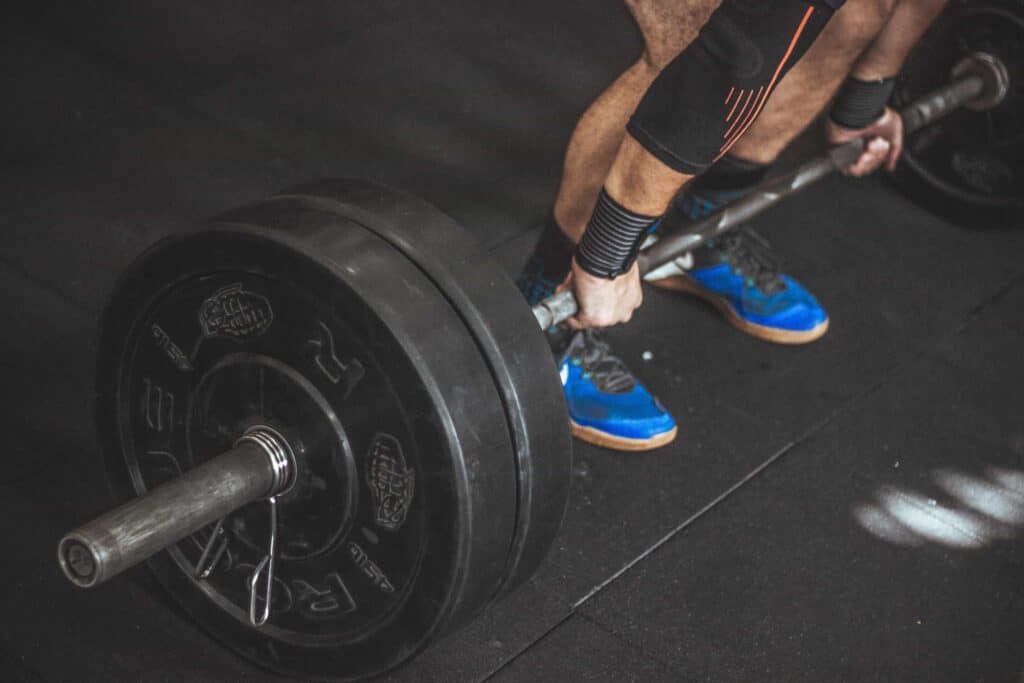The at-home workout program has unexpectedly become the new norm due to area gyms closing as a result of COVID-19. A by-product of this is that we are spending more of our time inside. Many are now wondering how we can take our old workout plan we did at the gym and incorporate it into a new home routine?
Now that we are home-based, there seems to be additional questions we need to think about and work around. In addition to the question above, there are other matters to worry about too, like when you’re going to exercise, space availability, and equipment needs.
Approach Your At-Home Workout Program Differently
A paradigm shift is a “a fundamental change in approach or underlying assumptions.” This may be a perfect time to start thinking differently about how we exercise at home, meaning, how we structure and execute our training routine. Change can be a very good thing when it comes to an individuals body and how that body adapts and progresses during a training cycle.
Five Basic Human Movement Patterns
Whether your training plan is geared towards a full-body, split routine or circuit-training, should not be the focus. What really matters most is training movements not muscles. Do not rely on specific exercises, instead, make sure you add-in specific movement patterns during each training session. Movement patterns are exercise classifications and can be thought of as the movement direction of the exercise. There are different schools of thought on how these movement patterns are categorized and even talked about.
The following is a modified version of some of the basic human movement patterns that should be included in the design of any training program. This list could also include other categories like hip dominant, knee dominant, rotational and anti-rotational categories. For the purposes of this article though, we will refer to the following five basic categories.
Squat
Any variation of a Squat is considered one of the best compound movements you can do. Exercises listed in this category are considered hip or knee-dominant by some. You can think of this category as exercises that utilize muscles around the hip and knee, like a Barbell Squat, Dumbbell Squat, or a Goblet Squat, as examples.
Hip Hinge
This particular category of exercises consists of movements that involve a “hinging” motion at the hip joint, and have little to no movement at the knee. Classic examples of exercises that incorporate a hip hinge are a Kettlebell Swing and a Romanian Deadlift.

Pull: Vertical & Horizontal
The vertical pull includes moving a weight or body weight vertically, relative to the position that your body is in. Examples of these types exercises would include Pull-ups and Lat Pull-down. The horizontal pull include any exercise that moves the weight toward your body horizontally. A few examples include: Bent-over Rows, Inverted Row or a Seated Row.
Push: Vertical & Horizontal
This category combines both vertical and horizontal in order to make life easier for you. The vertical push, includes exercises that move a load or weight vertically in relation to the torso, like a Military Press or Push Press. Horizontal push is a category of exercises that involves moving a weight straight out in front of you, away from the body, like a Bench Press.
Weighted Carry
Many strength and conditioning experts agree that a Weighted Carry is the best, all-in-one exercise a person can do. The Carry is ideal for increasing overall strength, especially back, core and grip strength. The exercise benefits don’t stop there though; it’s also ideal for improving stamina and functionality. A simple definition of a Weighted Carry is picking up a weight or a load and carrying it for distance or time. The best exercise example is a Farmer’s Carry.
The importance of adding these five movement patterns into your at-home workout program is invaluable. It offers someone a better way to design and customize their training program to meet all their needs. It also assures that an individual will work through the various planes of motion more often during training compared to a traditional training plan. The benefits of focusing on movement patterns instead of working specific muscles ensures a well-balanced, strong, functional body.
Exercise Program Design
Now that you have a better understanding of movement patterns, it’s important to use them in your next at-home workout. To experience measurable gains with your at-home training program, it’s important that you understand the basic concept of periodization.
“Periodization is an organized approach to training that involves progressive cycling of various aspects of a training program during a specific period of time.” Len Kravitz, PhD
To get the most benefit out of any at-home workout program, a periodized training plan should be followed. This is where adjusting the various training variables over time (i.e. sets/reps/rest/load/time under tension) comes into play. The idea is to control these variables during each training day and over the course of a full training year. By following such a training format over time, you’ll ensure maximal gains long-term, safely and effectively. Think about that for a moment. If you have not had strength gains in a while, maybe a lack of periodization is the culprit?
Stay Strong Together
The JeFit app makes thousands of strength training routines accessible. It comes with a customizable gym workout planner, an extensive exercise library, and a members-only Facebook group page. Check it out!
- Why Recovery Time Between Sets Matters for Muscle Growth - July 9, 2025
- Is Added Sugar OK After a Workout? - July 7, 2025
- AMRAP Workouts: Is it Worth the Effort? - July 4, 2025
